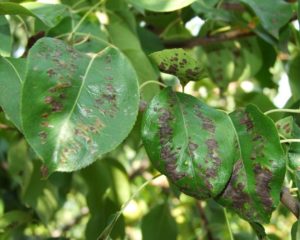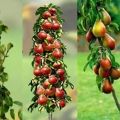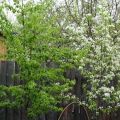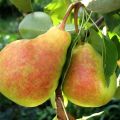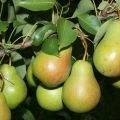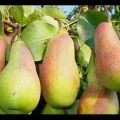Why a pear seedling grows poorly and takes root, what to do
A gardener cultivating fruit trees on the site faces growing problems. He wonders what to do if the pear does not grow well. There may be several reasons. It is important to determine exactly why the developmental arrest occurred. Then eliminate the cause and continue caring for the plants.
Content
- 1 Why pear seedling does not develop
- 1.1 Applying too much fertilizer
- 1.2 Pests eat roots
- 1.3 Tree diseases
- 1.4 Excessive watering
- 1.5 Small landing pit
- 1.6 The location of plant roots at a shallow depth
- 1.7 Lack of lighting
- 1.8 Improper watering and feeding
- 1.9 Damping out the root collar
- 1.10 An error in placing a peg near the trunk
- 1.11 An adult plant grows poorly
- 1.12 Violation of planting technique
- 2 Prevention
- 3 Conclusion
Why pear seedling does not develop
The main reason for the poor distribution of culture is that the tree does not take root well. Therefore, many summer residents do not want to grow pears in the plots at all. There are several reasons for poor survival. Before deciding to get rid of a seedling frozen in development, you should figure out how you can help it. The gardener is able to rectify the situation. The cause must be precisely determined.
Applying too much fertilizer
When planting, the gardener seeks to feed the seedling as much as possible. Sometimes overdoing it.
Mineral fertilizers kill beneficial bacteria that create a nutrient medium for the root system and the entire seedling.
Organic fertilizers are applied with care. When decomposed, they burn the roots. In addition, insufficient oxygen supply interferes with normal decomposition. At the same time, harmful substances are released. They interfere with the development and growth of the tree, inhibiting or completely stopping it.
Pests eat roots
A pear stops developing if pests appear in its measles system. Inspection of the appearance of the seedling will help to determine their presence, but this is very difficult to do. Since there are diseases in which the leaves on the trees dry or turn black. The same as in the presence of a pest in the root system.
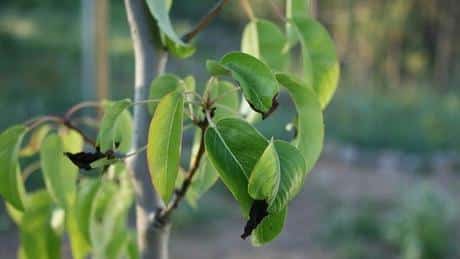
A common problem with young plant roots is the larva of the May beetle that has appeared in them. It harms young shoots, preventing them from growing and providing adequate nutrition to the tree. In winter, not only insects, but also rodents winterize in the roots, they are also able to destroy the pear.
Tree diseases
The presence of any disease inhibits the development of the seedling. The culture is susceptible to all sorts of diseases: fungal, viral and others. These include:
- scab;
- moniliosis;
- bacterial burn;
- black cancer;
- sooty fungus;
- powdery mildew;
- rust and others.
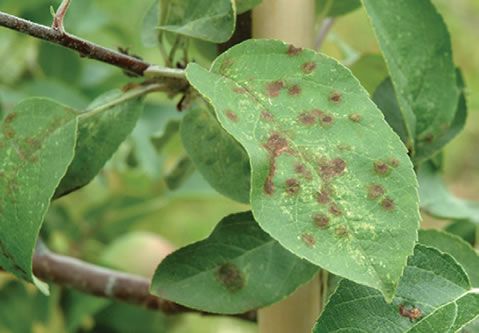
In order for the tree to start growing, it is necessary to monitor its field health. Timely processing of plants will help.Gardeners use chemicals or folk remedies.The use of chemistry is provided only in early spring and autumn in preparation for winter. It should be remembered that harmful substances are deposited in the fruit of the tree.
Summer residents choose varieties that are resistant to diseases for planting. Then there is no need for processing. But if there are other crops in the garden, gardeners also cultivate disease-resistant species for safety net.
Excessive watering
No fruit tree likes excess moisture. A small plant needs watering more often than an adult tree. But he also suffers more from excessiveness. When choosing a place and forming a planting pit, it is recommended to create a drainage layer, it will help get rid of excess moisture.
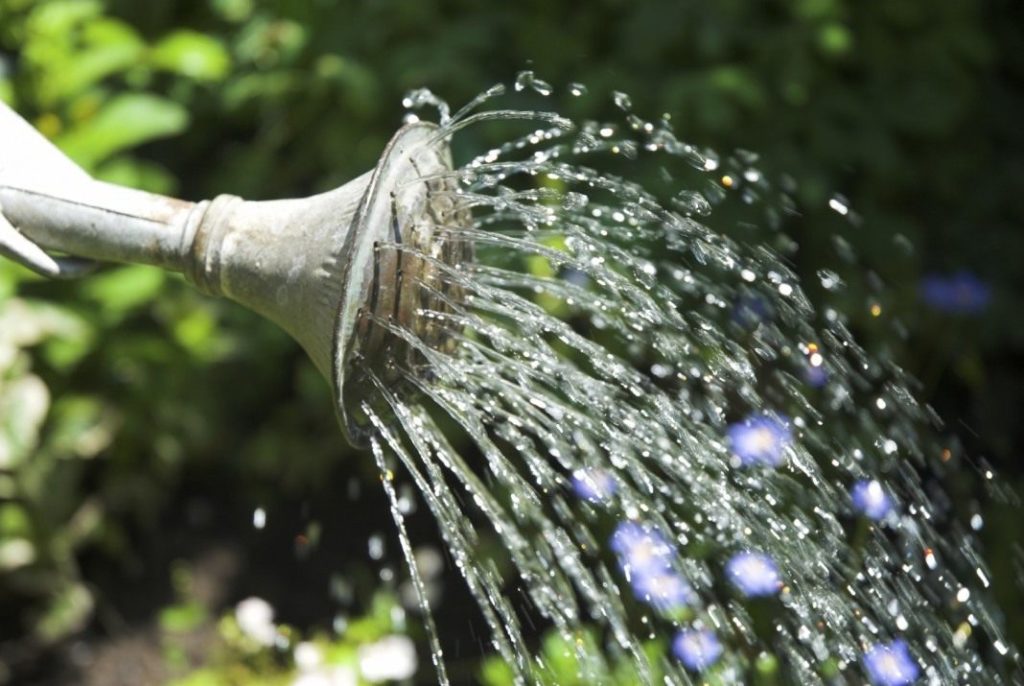
There is no need to water planted trees every other day. It is necessary to take into account weather conditions, the depth of the groundwater and other external factors. Gardeners recommend mulching the trunk circle. Then the moisture lasts longer. In addition, a layer of mulch will prevent weeds from growing. This is prevention against disease. Watering is rare, but abundant. After each watering, the trunk circle is loosened, if mulch is not used.
Small landing pit
It is important to respect the dimensions of the planting pit. For most varieties of crops, it is standard. Diameter 1 m, depth 0.6-0.8 m. If it is not deep or wide enough, the roots of the seedling do not straighten out as needed, but bend inward. And improper root growth inhibits or stops the growth of the seedling. When planting, make sure that the roots in the planting pit are even.

The location of plant roots at a shallow depth
If you do not water the soil during planting, then the pear roots run the risk of remaining at a shallow depth. Such an arrangement of the root system does not fulfill the functions assigned to them.
Consequently, the tree dries up quickly, receives less nutrients and stops growing and developing.
In order to avoid this problem, during planting, the gardener carefully monitors how the seedling is covered with soil. At the end of planting, it is even recommended to compact the soil. Then the roots will be at a normal depth and will perform the assigned tasks.
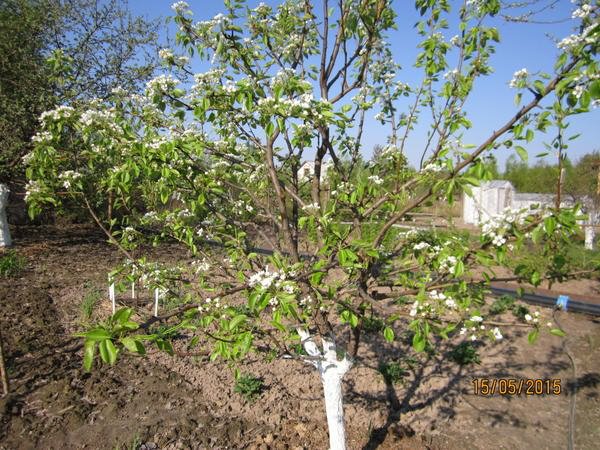
Lack of lighting
Gardeners do not attach importance to where they are going to plant a seedling. And then they ask others why their tree is not growing. Insufficient lighting becomes the reason. The pear does not receive enough sunlight. As a result, it develops very slowly, not at all pleasing the owners. The summer resident begins to think about the variety, and the reason is not so global. It is necessary to take into account when planting that the culture loves illuminated areas, closed from the wind.
Improper watering and feeding
Gardeners advise watering and feeding correctly. You can not pour on the trunk and branches, if this is not provided for by the instructions, in cases where the top dressing is foliar.

A groove is formed around the trunk, watered strictly into it. This is done because most of the roots that absorb moisture and nutrients are located there. Observing this requirement, the summer resident will not lose the tree.
Damping out the root collar
A signal that this is happening is premature reddening of the leaves. This happens because summer residents feed the trees too much. Another reason gardeners call a large accumulation of melt water on the site or directly near the tree.
Mature trees are resistant to damping, so they do not have such a problem.
An error in placing a peg near the trunk
The support peg is installed in the planting hole at the very beginning, even during digging, and not after planting the seedling.The role of the peg is to support an immature tree in strong gusts of wind. An insufficiently deepened stake near the trunk damages the young roots of the seedling and harms its development.
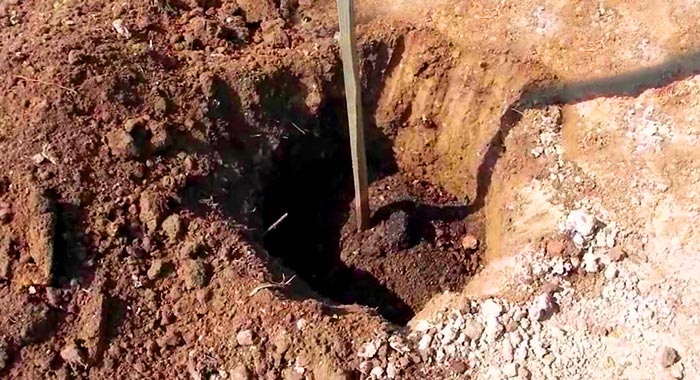
It is recommended to hammer the stake from the south side, the reason is that it is able to protect an immature pear from overheating... The tree stops growing, and the summer resident thinks about wasted efforts and time.
An adult plant grows poorly
An adult pear can also grow poorly. There are several reasons:
- Lack of nutrients. Mineral fertilizers in spring, organic in autumn. In the middle of summer, plants are also watered with complex fertilizers of a mineral composition.
- Incorrect crown formation. Pruning is carried out annually. Preferably in the fall. Sanitary cleaning of the tree is carried out throughout the season. The gardener removes dry and diseased branches. Helping the plant grow, develop further.
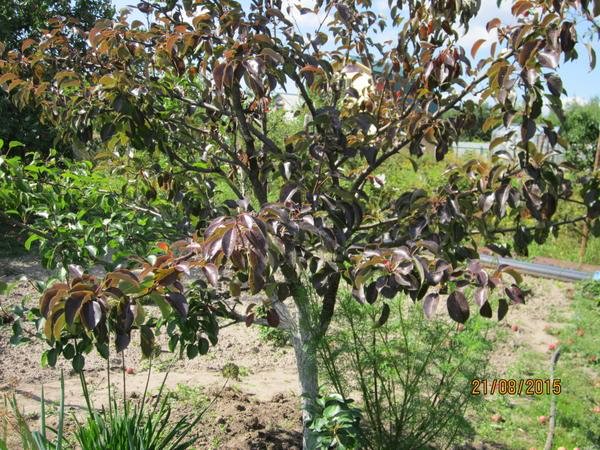
An adult pear also stops developing. Only in this case, the gardener also loses part of the harvest.
Violation of planting technique
When growing a pear, follow the recommendations of experienced summer residents. Any disturbance during planting leads to the fact that the tree is inhibited in development or does not grow at all. A pear does not tolerate a transplant, so summer residents need to be extremely careful and attentive to details. Strictly observe the planting scheme, properly dig a planting hole, plant so as not to deepen the root collar and much more. Taking into account all the nuances will help to avoid possible problems in the future.
Prevention
Sometimes it is easier to prevent than to correct possible mistakes. Preventive work consists of:
- in compliance with all landing requirements;
- in fulfilling agrotechnical requirements;
- timely treatment from pests and diseases.
The correct selection of the variety plays an important role, the acclimatized species feels better in familiar conditions. The tree grows quickly, with proper care, it bears fruit 3-4 years after planting.
Conclusion
Growing pears is not an easy process. The gardener puts a lot of effort and patience. Hard work leads to the fact that the summer resident receives the declared harvest from the planted tree. A pear requires attention, care and care; if these requirements are met, problems with its cultivation will not arise.
